our books
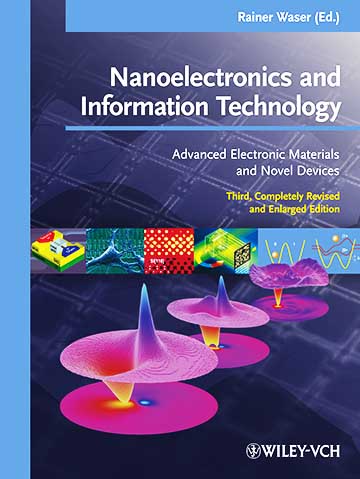
Rainer Waser (ed.):
NANOELECTRONICS AND INFORMATION TECHNOLOGY
Advanced Electronic Materials and Novel Devices
3., Complete New Revised Edition
©April 2012 WILEY-VCH
ISBN-10: 3-527-40927-0, ISBN-13: 978-3-527-40927-3
Zur Verlagsseite
Third, completely revised and updated edition of our modern full-color introduction to advanced electronic materials including a current review of novel devices for information technology. Approximately one third of all chapters is new, the others have been comprehensively revised. Providing an introduction to electronic materials and device concepts for the major areas of current and future information technology, the value of this book lies in its focus on the underlying principles. Illustrated by contemporary examples, these basic principles will hold, despite the rapid developments in this field, especially emphasizing nanoelectronics. There is hardly a field where the links between basic science and application are tighter than in nanoelectronics and information technology. As an example, the design of single electron devices, molecular electronic structures or quantum computation systems is simply inconceivable without delving deep into quantum mechanics. This textbook is primarily aimed at students of physics, electrical engineering and information technology as well as material science in their third year and higher. It is equally of interest to professionals wanting a broader overview of this hot topic.
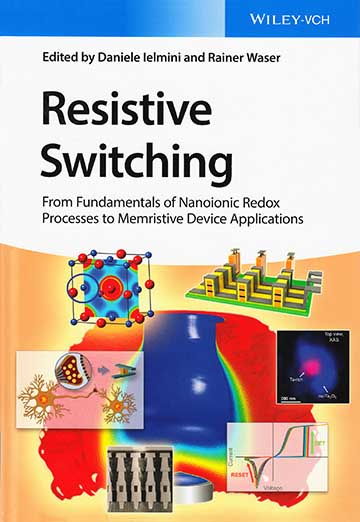
Ielmini, Daniele / Waser, Rainer (Hrsg.):
RESISTIVE SWITCHING
From Fundamentals of Nanoionic Redox Processes
to Memristive Device Applications
1. Auflage Januar 2016
2016. 740 Seiten, Hardcover
180 Abb. (50 Farbabb.)
ISBN 978-3-527-33417-9
© Wiley-VCH, Weinheim
Zur Verlagsseite
Comprehensive in its coverage, this invaluable, self-contained reference introduces readers to this wide field, providing the knowledge, tools, and methods needed to understand, characterize and apply resistive switching memories.
Aus dem Inhalt:
INTRODUCTION
TRANSITION METAL OXIDES
Atomic Structures of Selected Binary, Ternary Oxides
Deposition Techniques
Thermodynamics of Oxidation, Ellingham Diagram
Electronic Structure and Conduction
Correlated Electrons
Ionic Conduction
RESISTIVE SWITCHING
Device Structure
Unipolar Switching: Forming, Set/Reset Operations
Bipolar Switching: Forming, Set/Reset Operations
Coexistence of Unipolar/Bipolar Switching
Filamentary Switching and Atomic Force Microscopy Analysis
Interface Switching
Threshold and Memory Switching
Time Dependence of Set/Reset
Resistance Dependence of Set/Reset
SWITCHING MECHANISMS AND MODELS
Unipolar Switching: Set/Reset Mechanisms and Models
Bipolar Switching: Set/Reset Mechanisms and Models
Modeling of Resistance Dependence (Filament Size and Gap)
Modeling of Time Dependence
Modeling of Set Current Dependence
Overshoot and Parasitic Effects
Material Dependence and Universal Switching
MEMORY RELIABILITY
Read Disturb and The Time-Voltage Dilemma
Data Retention
1/f and Random Telegraph Signal Noise
Switching Variability and Set/Reset Algorithms
Reset Current Reduction
Set/Reset Instability
Cycling Endurance
MEMORY CELL STRUCTURES
MIM Structures
Bilayered Structures
Lighting-Rod Structures
Contact RRAM
Complementary Resistance Switch (CRS)
Multilevel Cells
Alternative Materials: OxRRAM, PoRRAM, CBRAM
Bottom-Up Approaches: Nanotubes, Nanowires and Self-Assembly
MEMORY ARCHITECTURES
Crossbar Array
Diode Selectors
Transistor Selectors
1T1R Architectures
CMOL
Scaling Issues (Series Resistance, Programming Cross Talk, 3D Stacking Issues)
LOGIC GATES
The Memristor
Crossbar Latch
Data Restoration
IMP Function
STDP in Memristor Gates
CONCLUSIONS
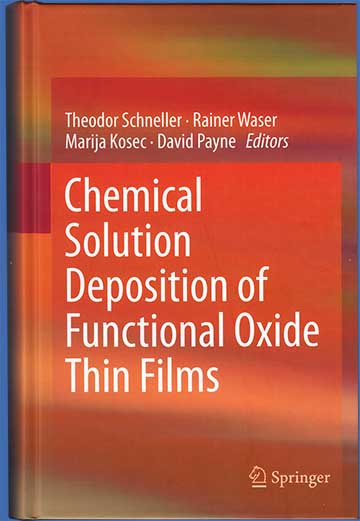
Theodor Schneller, Rainer Waser, Marija Kosec, David Payne (Editors):
CHEMICAL SOLUTION DEPOSITION OF FUNCTIONAL OXIDE THIN FILMS
ISBN 978-3-211-99310-1
© 2013 Springer-Verlag Wien
Zur Verlagsseite
This is the first text to cover all aspects of solution processed functional oxide thin-films.
Chemical Solution Deposition (CSD) comprises all solution based thin- film deposition
techniques, which involve chemical reactions of precursors during the formation of
the oxide films, i. e. sol-gel type routes, metallo-organic decomposition routes, hybrid
routes, etc. While the development of sol-gel type processes for optical coatings on glass
by silicon dioxide and titanium dioxide dates from the mid-20th century, the first CSD
derived electronic oxide thin films, such as lead zirconate titanate, were prepared in the
1980's. Since then CSD has emerged as a highly flexible and cost-effective technique
for the fabrication of a very wide variety of functional oxide thin films. Application
areas include, for example, integrated dielectric capacitors, ferroelectric random access
memories, pyroelectric infrared detectors, piezoelectric micro-electromechanical
systems, antireflective coatings, optical filters, conducting-, transparent conducting-,
and superconducting layers, luminescent coatings, gas sensors, thin film solid-oxide fuel
cells, and photoelectrocatalytic solar cells. In the appendix detailed "cooking recipes" for
selected material systems are offered.
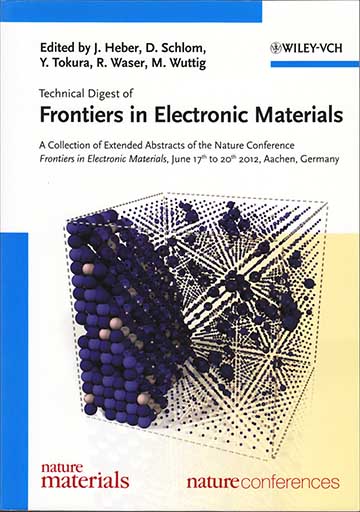
Jörg Heber, Darrell Schlom, Yoshinori Tokura, Rainer Waser, Matthias Wuttig (Editors):
FRONTIERS IN ELECTRONIC MATERIALS
Correlation Effects, Spintronics, and Memristive Phenomena - Fundamentals and Applications
1. Auflage Juli 2012
692 Seiten, Softcover
ISBN 978-3-527-41191-7
© 2012 Wiley-VCH, Berlin
Zur Verlagsseite
A collection of extended abstracts from the latest fundamental as well as application-oriented research, as presented at Frontiers in Electronic Materials, a Nature conference on correlation effects and memristive phenomena, held in Aachen in 2012.
Aus dem Inhalt
Electron correlation and unusual quantum effects
Oxide heterostructures and interfaces
Multiferrroics, spintronics, ferroelectrics and flexoelectrics
Memristive phenomena: Phase change materials and nanoionic redox systems
Energy conversion: Superionic conductors, thermoelectrics, photovoltaics
Information technology: Chip architectures and computational concepts
Nanotechnology: Atomic layer deposition, physical layer deposition, novel patterning techniques
Advanced characterization: Spectroscopy, microscopy, scanning probe methods
Theory and Modelling: first principle methods, molecular dynamics, multiscale simulation

Günter Schmid, Harald Krug, Rainer Waser, Viola Vogel, Harald Fuchs, Michael Grätzel, Kuppuswamy Kalyanasundaram, Lifeng Chi (eds.):
NANOTECHNOLOGY
9 Volumes - This set of 9 volumes represents an in-depth overview of everything there is to know about nanotechnology and nanoscience. With each volume dedicated to a specific topic covered in detail by the relevant experts, this is the definitive cross-disciplinary reference.
©November 2009 WILEY-VCH
ISBN-10: 3-527-31723-6, ISBN-13: 978-3-527-31723-3
Volume 1: Principles and Fundamentals (edited by G. Schmid)
Volume 2: Environmetal Aspects (edited by H. F. Krug)
Volume 3: Information Technology I (edited by R. Waser)
Volume 4: Information Technology II (edited by R. Waser)
Volume 5: Nanomedicine and Nanobiotechnology (edited by V. Vogel)
Volume 6: Nanoprobes (edited by H. Fuchs)
Volume 7: Light and Energy (edited by M. Grätzel)
Volume 8: Nanostructured Surfaces (edited by L. Chi)
Volume 9: Index plus additional material
Rainer Waser (Ed.):
Volume 3: Information Technology I
©May 2008 WILEY-VCH
ISBN-10: 3-527-31738-4, ISBN-13: 978-3-527-31738-7
Zur Verlagsseite
This authoritative reference addresses IT applications of nanotechnology, specifically computer memory and how the technology can be miniaturised. Aimed at students of physics, electrical engineering and IT, but also of interest to professionals wanting a broader overview.
Rainer Waser (Ed.):
Volume 4: Information Technology II
©June 2008 WILEY-VCH
ISBN-10: 3-527-31737-6, ISBN-13: 978-3-527-31737-0
Zur Verlagsseite
Adaptation of nanoscience to electronics is the hot topic discussed in this cross-disciplinary reference. Transistors, logic devices and quantum mechanics, just a couple of the subjects explained by leading professionals in the field.
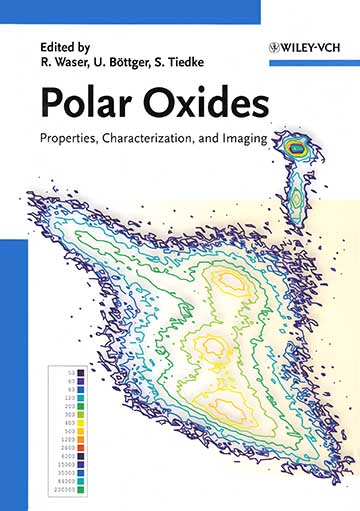
Rainer Waser, Ulrich Böttger, Stephan Tiedke (eds.):
POLAR OXIDES
Properties, Characterization, and Imaging
©December 2004 WILEY-VCH
ISBN-10: 3-527-40532-1, ISBN-13: 978-3-527-40532-9
The book encompasses a wide range of topics including the characterization and investigation of structural, dielectric and piezoelectric properties of ceramic materials such as transition metal oxides (including PZT, PLZT, BTO, BST etc). Further issues are phase transitions, electrical and optical properties as well as microscopic investigations. A number of renowned international experts discuss and assess the properties of these materials under the aspects of new and advanced characterization and imaging techniques.
